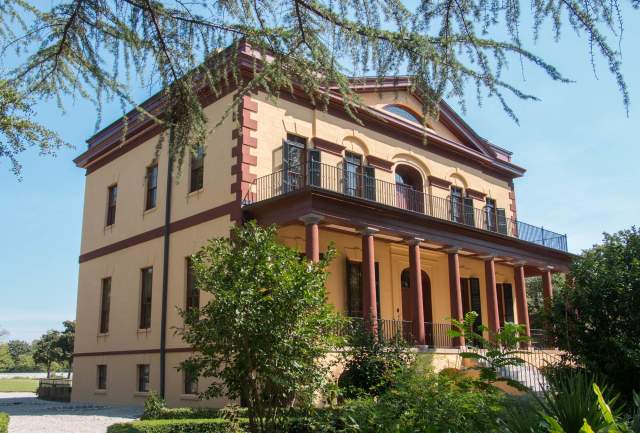Historic Columbia
For more than 60 years, Historic Columbia has been preserving places and sharing complex stories throughout Richland County. From the nation’s only museum dedicated to interpreting the post-Civil War Reconstruction period to one of Columbia’s oldest remaining structures, to creating a hub for horticultural research and preserving the untold stories of the LGBTQ+ community, the Capital City has impactful stories to tell.
In the heart of the Historic House & Garden District you’ll find stories of the Civil Rights Movement, beautiful gardens filled with native plants, and one of only five National Historic Landmarks showcasing the skill of Robert Mills, the architect who designed the Washington Monument.
On Hampton Street you will find the Woodrow Wilson Family Home, which is the nation’s only museum dedicated to interpreting the post-Civil War Reconstruction period. Through panel exhibits, interactive technologies and guided tours, visitors learn all about Columbia’s late 19th-century history.
If you are in search of beautiful gardens filled with native and exotic plants, the capital city’s oldest estate should be your next stop. The Hampton-Preston property features magnolias and live oaks as well as beautiful fountain garden that provides a dynamic setting. If you need a place to stop and take in the views, there are pergolas and a gazebo. After you’ve taken in views, and you’re still wanting more head over to the northwest section of the gardens to the new Boyd Foundation Horticultural Center. At the Center you will find a state-of-the-art greenhouse, which transforms the property into a hub for horticultural research, propagation, interpretation and programming.
The Mann-Simons Site, home to the same entrepreneurial African American family for nearly 130 years, traces the journey of Columbia’s African American community from enslavement through urban renewal. After a decade of research, archeological have uncovered thousands of artifacts, which has led a new permanent exhibit. The new outdoor museum now features five “ghost structures,” that include a grocery store, lunch counter, and residences.
Continuing the African American history of Columbia, the Modjeska Monteith Simkins House honors the woman for whom it was named, one of South Carolina’s greatest human rights advocates. While living in the home, she worked with many local and national civil rights leaders, including Thurgood Marshall, who even stayed in the home. The artifacts and exhibits in the home showcase her career as a public health working and state secretary of the South Carolina NAACP.
Explore these spaces with one of Historic Columbia’s guided tours.
Historic Sites
For more than 250 years, Columbia SC has pushed itself and its people forward. From the Revolutionary War through the Civil Rights era and beyond, our collective struggles and rich history have resulted in our unique culture.





